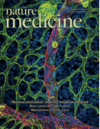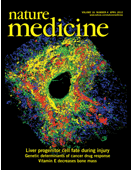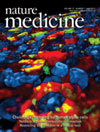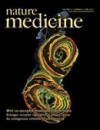 Testing for HIV does not simply end with the diagnosis that the virus is present in a patient; caregivers also need to track the disease’s progress to adjust ongoing treatment. Yet tests for monitoring HIV infection require sophisticated instruments, well-trained clinicians and expensive lab ware. All those are in short supply on HIV’s front line in places such as rural sub-Saharan Africa. “It’s a problem not just of cost,” explains hematologist Helen Lee of the University of Cambridge in the UK. “It’s a problem of having access.” In the last year, stripped-down standalone tests have appeared on the market, offering rural patients a cheaper, faster count of their CD4 immune cells. And in the coming months, a class of tests that measure viral load should enter routine point-of-care use, too, offering caregivers a choice of simple tools for measuring HIV infections.
Testing for HIV does not simply end with the diagnosis that the virus is present in a patient; caregivers also need to track the disease’s progress to adjust ongoing treatment. Yet tests for monitoring HIV infection require sophisticated instruments, well-trained clinicians and expensive lab ware. All those are in short supply on HIV’s front line in places such as rural sub-Saharan Africa. “It’s a problem not just of cost,” explains hematologist Helen Lee of the University of Cambridge in the UK. “It’s a problem of having access.” In the last year, stripped-down standalone tests have appeared on the market, offering rural patients a cheaper, faster count of their CD4 immune cells. And in the coming months, a class of tests that measure viral load should enter routine point-of-care use, too, offering caregivers a choice of simple tools for measuring HIV infections.
Continue reading Point-of-care tests poised to alter course of HIV treatment
Category Archives: Nature Medicine
Europe plans molecular screening center for translational research
 Almost a decade ago, the US National Institutes of Health kicked off its Molecular Libraries Initiative to provide academic researchers with access to the high-throughput screening tools needed to identify new therapeutic compounds. Europe now seems keen on catching up.
Almost a decade ago, the US National Institutes of Health kicked off its Molecular Libraries Initiative to provide academic researchers with access to the high-throughput screening tools needed to identify new therapeutic compounds. Europe now seems keen on catching up.
Last month, the Innovative Medicines Initiative (IMI), a €2 billion ($2.6 billion) Brussels-based partnership between the European Commission and the European Federation of Pharmaceutical Industries and Associations (EFPIA), invited proposals to build a molecular screening facility for drug discovery in Europe that will combine the inquisitiveness of academic scientists with industry know-how. The IMI’s call for tenders says the facility will counter “fragmentation” between these sectors. Continue reading Europe plans molecular screening center for translational research
Overwhelmed drug regulators seek cure in cooperation
 Regulatory authorities such as the US Food and Drug Administration and European Medicines Agency face continual criticism for their plodding pace of drug approval decisions. In 2009, the last year for which complete data are available, the median time for a standard review of a drug application in the US was 13 months—30% longer than the agency’s target for such reviews. But even with this situation, it’s undeniable that both agencies devote far more human and financial resources to the process than most other countries can afford to spend on their own.
Regulatory authorities such as the US Food and Drug Administration and European Medicines Agency face continual criticism for their plodding pace of drug approval decisions. In 2009, the last year for which complete data are available, the median time for a standard review of a drug application in the US was 13 months—30% longer than the agency’s target for such reviews. But even with this situation, it’s undeniable that both agencies devote far more human and financial resources to the process than most other countries can afford to spend on their own.
To keep up, many other medical regulatory authorities are banding together with one another to share the expertise and clinical results needed to make faster decisions. Continue reading Overwhelmed drug regulators seek cure in cooperation
On thirtieth anniversary, calls for HIV cure research intensify
 Thirty years ago this month, scientists first reported the existence of AIDS, and in the intervening decades researchers have focused steady efforts on prevention, long-term treatments such as antiretroviral drugs, and patient care. What has fallen in and out of fashion during that time is seeking a ‘cure’ for HIV. That changed when scientists reported that they had cured one man of the virus through a bone marrow transplant (Blood 117, 2791–2799, 2011). But the circumstances of that 2007 transplant were unique, and researchers say they are uncertain about how to fund additional cure-directed research without cannibalizing other components of the global HIV/AIDS research machine. Continue reading On thirtieth anniversary, calls for HIV cure research intensify
Thirty years ago this month, scientists first reported the existence of AIDS, and in the intervening decades researchers have focused steady efforts on prevention, long-term treatments such as antiretroviral drugs, and patient care. What has fallen in and out of fashion during that time is seeking a ‘cure’ for HIV. That changed when scientists reported that they had cured one man of the virus through a bone marrow transplant (Blood 117, 2791–2799, 2011). But the circumstances of that 2007 transplant were unique, and researchers say they are uncertain about how to fund additional cure-directed research without cannibalizing other components of the global HIV/AIDS research machine. Continue reading On thirtieth anniversary, calls for HIV cure research intensify